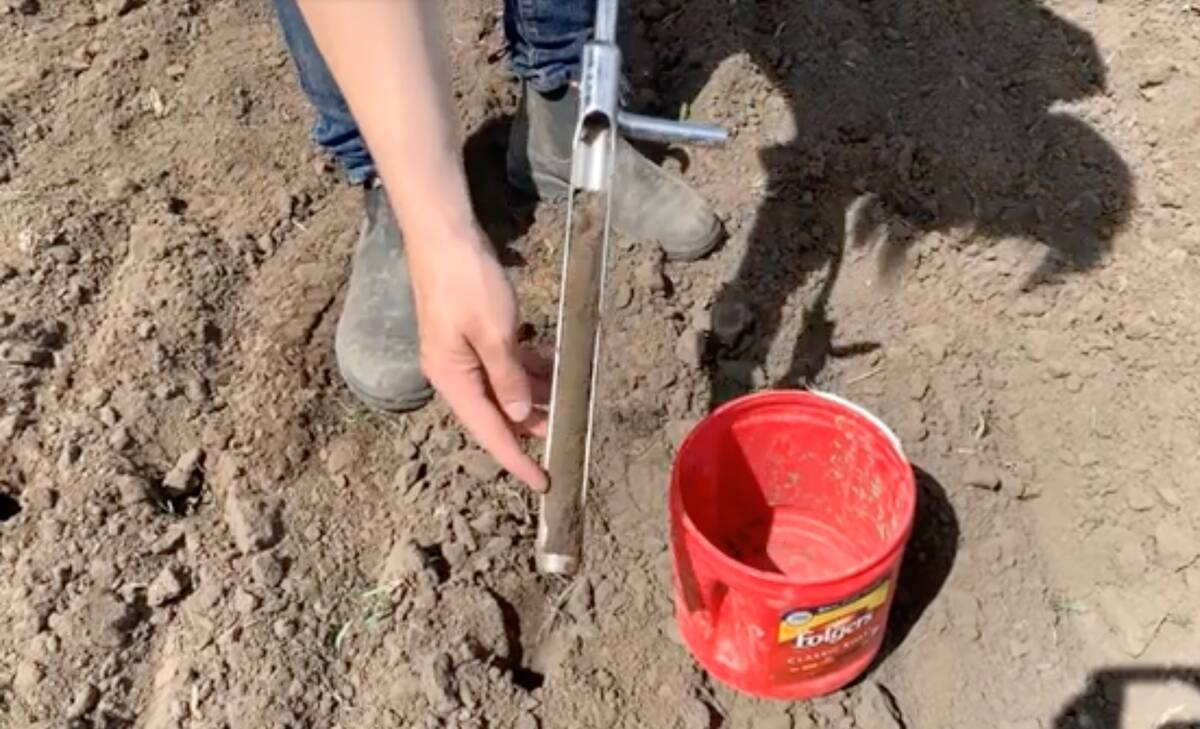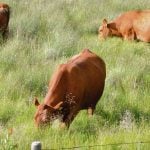Farmers up against herbicide-resistant weeds need to rethink their cropping systems and add more angles in their approach to long-term weed control.
This advice came from Dr. Drew Lyon of Washington State University during his presentation at the Manitoba Agronomists’ Conference in December.
While Lyon’s discussion primarily focused on integrated weed management (IWM) in dryland wheat production systems in the Pacific Northwest, the strategies he discussed are equally relevant to Canadian farmers.
Read Also

Make a plan to achieve the four Rs of fertilizer management
Planning for 4R nutrient management must be farm-specific — that is, geared for the unique crops, cropping practices, soils and climatic conditions of the farm, researcher Ross McKenzie writes.
He zeroed in on three major principles of IWM: preventing weed problems before they start, choking out weeds and keeping weeds off balance.
Preventing problems before they start
Lyon highlighted the importance of clean seed and outlined strategies for avoiding the introduction of unwanted seeds.
“You want to tarp grain loads going down the road,” Lyon advises. “A lot of weed infestations start along roadsides because the weed seeds sift to the top of the grain truck and then blow out and get started along roadsides.”
He also suggests cutting or removing weeds before they set seed. And for farmers using livestock manure, he recommends composting it thoroughly to kill any weed seeds.
While herbicide resistance was first discovered in the 1950s in the U.S., the problem escalated more quickly on fields in Australia, and as a result, farmers there have become leaders in the battle against herbicide resistance. In the early 2010s, Australians introduced the concept of harvest weed seed control.
When they looked at wheat harvests, they noticed weeds that developed resistance were rewarded by being spread throughout the field from the back of the combine. Harvest weed seed control attempts to address this issue.
“They started off with narrow windrow burning, which was highly effective but had issues with fire escaping and smoke-related health problems, so that approach has been slowing down,” Lyon says.
The industry is now shifting toward integrated impact mill systems, also known as weed seed destructors. These systems destroy a significant percentage of the seeds passing through the combine without leaving residue that needs to be burned or baled. But they are expensive.
Another issue is that the mature seed has to be in the head at the time of harvest; if it shatters out before that, the seeds are not going to go through the mill. But Lyon notes a suggestion from Australian weed specialist Michael Walsh — that if at least 30 per cent of the seed remains in the head at harvest, the process can still make headway.
Wild oats come pretty close to reaching, and sometimes exceed, that 30 per cent shatter threshold. But even though wild oats aren’t the ideal candidate for impact mills, Lyon points out that destroying some of the seed is better than nothing.
“Over time, the less viable seed you put in the seed bank, the less you have to deal with,” he says.

Choking out weeds
When he says farmers need to choke out weeds, Lyon essentially means they need to grow a crop that out-competes the weeds.
“I’ve put out hundreds of herbicide trials in my 30-plus-year career. And herbicides always look better in a good stand of a crop than they look in a poor stand,” he explains. “Herbicides rely on crop competition.”
Prior to the introduction of very effective herbicides, this method was one of the principal strategies for weed control.
“I think we need to get back to looking at doing everything we can to grow a good, competitive crop and getting it out of the ground as quickly as possible,” he says. “A lot of competition occurs early, so the quicker you can get your crop out of the ground and growing and competing, the better.”
He advises using quality seed that emerges early and competes better early on. He also suggests narrowing row spacing to get shading more quickly.
“In my mind, this is one of your best weed control strategies you have, even if you’re using herbicides.”

Keeping weeds off balance
Don’t give weeds an opportunity to adapt.
“The idea here is, don’t keep doing the same thing over and over again,” Lyon says. “Don’t use the same herbicide or herbicide modes of action; don’t use the same crop rotation; and don’t use the same tillage practices over and over again, or you will develop resistance.”
For crop rotations, Lyon recommends selecting crops with varied seeding dates: winter crops, early and late spring crops, and even summer crops — essentially, crops with different life cycles.
One thing the Australians do is work perennial crops into their system.
“They’ll do annual cropping for several cycles, and then they’ll plant a pasture crop for a cycle (three or four years),” Lyon says. “They’re able to drive that weed seed bank down on the weeds that are problematic.”
Farmers in the Pacific Northwest do something similar, he adds. They have a lot of Italian ryegrass problems, and farmers — especially those in low-lying, wetter areas — will plant alfalfa.
“As long as you cut that alfalfa before the Italian ryegrass sets seed, no seed goes into the seed bank for several years, and then you come back and annual-crop it again.”
Lyon also recommends choosing crops with varied competitive abilities and extended rotation cycles to manage weeds. He discussed how the length of time you stay out of a particular crop plays a crucial role in reducing weed populations — and points to a study he did in western Nebraska on jointed goatgrass with some compelling results.
“Jointed goatgrass was a big problem in our winter wheat-fallow production areas in western Nebraska,” he says. “It shares a common genome with wheat, so they can hybridize. Fortunately, most of this seed is sterile and won’t produce a plant, but a low percentage can produce and backcross.”
The results showed excluding wheat from the rotation for one year, similar to a winter wheat-fallow situation, would reduce the weed seed bank by about 15 per cent, leaving around 85 per cent of the seed still viable.
However, if the break extends to two or three years, it can reduce the seed bank to about 35 per cent, and after three years, less than 10 per cent of the seed would remain viable.
“This is true of a lot of annual grasses, which is why a crop rotation can be quite effective if you can stay out and prevent new weed seeds from being produced for two, three or four years,” he said. “You can drive down the seed bank fairly quickly.”
Another way to keep weeds off balance is to rotate or combine herbicides to get more than one mode of action working against the weeds.
“We’ve tended to throw one mechanism of action at a time at this, and when we burn that one out, then we go to the next one until we burn that one out,” Lyon says. “It’s gotten us to the position where we have fewer and fewer herbicides that now work.”
The same principle can be applied to mechanical control methods. He recommends no-till growers introduce a little tillage every once in a while, and those constantly tilling should introduce some no-till.
“You want to use cultural, mechanical and chemical rotation to keep your weed infestations low,” said Lyon. “The fewer plants you spray with herbicides, the less chance you have of developing herbicide resistance.”
















